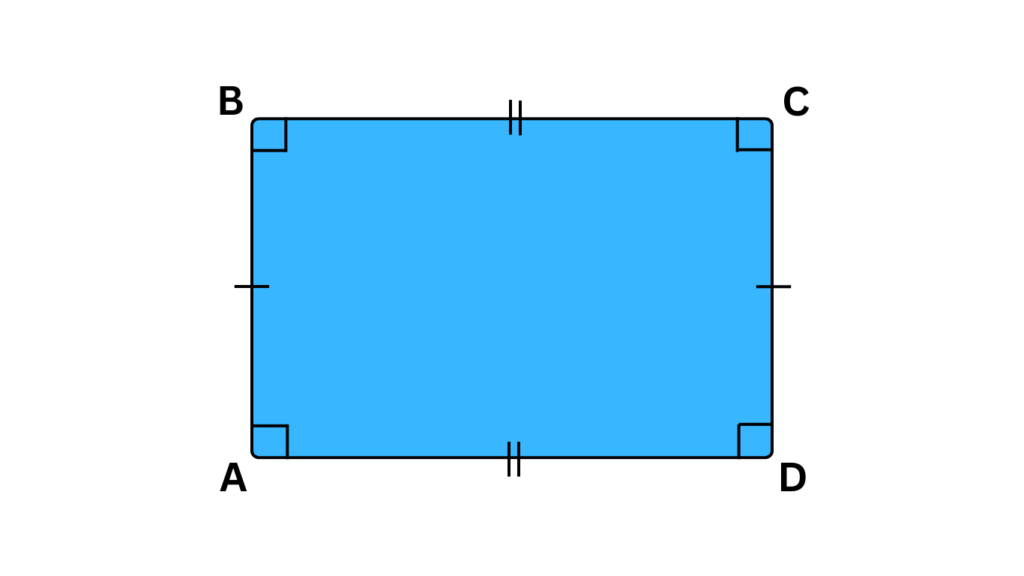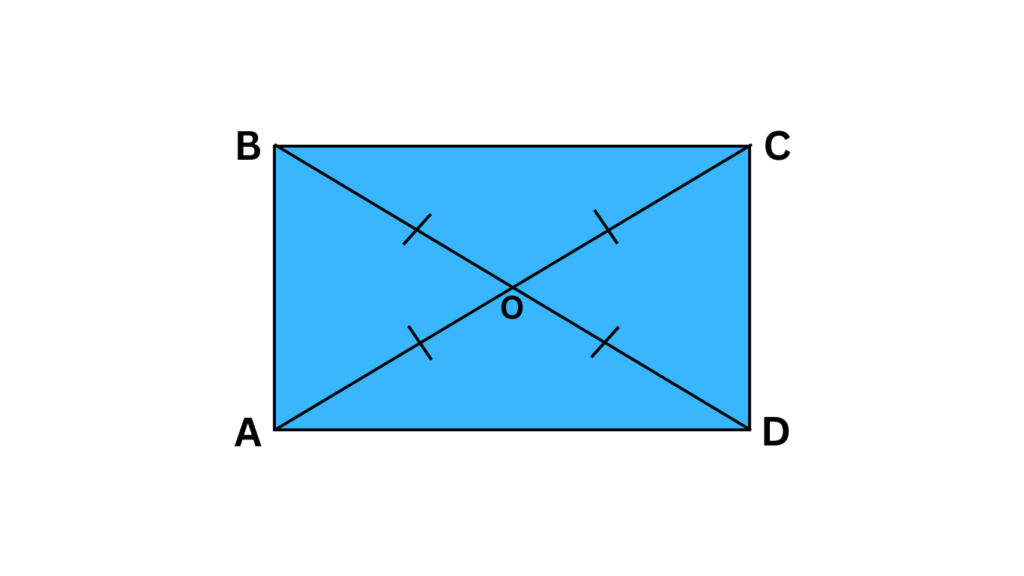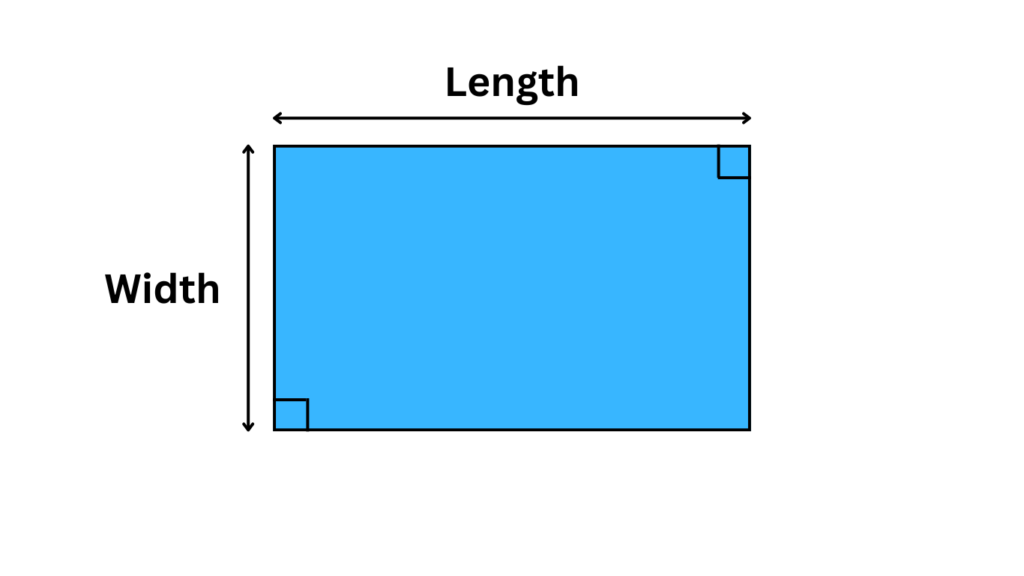Introduction
From your smartphone’s screen to the pages of your favorite book, rectangles are everywhere! But what is a rectangle, really? This seemingly simple shape holds a world of mathematical elegance and practical utility.
Have you ever stared at a messy bookshelf, books precariously balanced on uneven shelves? It’s enough to make anyone long for a touch of organization. But fear not, fellow geometry enthusiasts (and bookshelf warriors)! There’s a superhero in the world of shapes that swoops in to save the day – the rectangle. Buckle up because we’re about to embark on a journey to unveil the mysteries of this dependable four-sided wonder.
What is a Rectangle?
Imagine a perfect square, the embodiment of order and stability. Now, stretch it a bit on two opposing sides, but crucially, keep its four corners perfectly sharp, like crisp right angles. Congratulations, you’ve just created a rectangle.
In simpler terms what is a rectangle? A rectangle is a flat, four-sided shape (known as a quadrilateral) where all four corners meet at a perfect 90-degree angle, and opposite sides run strictly parallel to each other, just like train tracks. Think of it as a square’s more versatile cousin, where right angles reign supreme, but opposite sides can have some wiggle room in terms of length.
Here’s a visual aid to solidify this concept:

As you can see, this rectangle boasts four sides, with opposing sides (AB and CD, as well as AD and BC) highlighted to emphasize their parallelism. Additionally, each corner is marked with a right angle symbol, showcasing the defining characteristic of a rectangle.
Properties of a Rectangle
Now that we’ve grasped the basic idea of what is a rectangle, let’s delve deeper and explore the specific properties that make it unique in the world of shapes. These properties are like the building blocks that define the rectangle’s identity:
- Right Angles Everywhere: Remember those perfectly sharp corners we mentioned? Well, they house the magic of a rectangle. Each and every corner of a rectangle boasts a 90-degree angle, making it the ideal shape for ensuring perfect alignment and straight edges. This is why rectangles are the go-to choice for things like doors and windows – they guarantee a snug fit and smooth opening.
- Parallel and Congruent Opposites: Here’s another treat brought to you by rectangles. Opposite sides in a rectangle are not only parallel (running side-by-side without ever meeting), but they are also congruent (exactly the same length). So, if you measure the length of side AB, you can be confident that side CD will match it perfectly. This property is what makes rectangles ideal for building things like bookshelves – you can stack books neatly, knowing each shelf will provide the same amount of space.
- Consecutive Interior Angles: This one might sound a bit more technical, but it’s actually quite intuitive. Imagine standing inside a rectangle and looking at two angles that share a side but are not opposite each other (like angles A and B in the image). In the world of rectangles, these consecutive interior angles are always supplementary, meaning they add up to exactly 180 degrees.
- Diagonals with a Twist: Imagine drawing a line from one corner of the rectangle to the opposite corner. These lines, which intersect (cross each other) inside the shape, are called diagonals. Here’s a cool twist: in a rectangle, these diagonals are not only congruent (the same length) but they also bisect each other (cut each other in half at a point exactly in the middle). Similarly, if we want to find the length of the diagonal we simply use the Pythagorean theorem: d = √l^2 +w^2

Types of Rectangles
After learning the basic concepts of what is a rectangle and its properties let us dive into various types of rectangle that can be found.
- Square as a Special Type of Rectangle: A square is a special type of rectangle where all four sides are of equal length. This makes every square a rectangle, but not every rectangle is a square. Squares inherit all the properties of rectangles but add the characteristic of equal side lengths.
- Golden Rectangles: A golden rectangle is one whose side lengths are in the golden ratio, approximately 1:1.618. This ratio has been considered aesthetically pleasing since ancient times and appears in various forms of art, architecture, and nature. The Parthenon in Greece and the paintings of Leonardo da Vinci are famous examples of the use of golden rectangles.
Calculating the Area and Perimeter of a Rectangle
Now that you can confidently understand what is a rectangle and its various properties, let’s delve into the world of measurement. We can calculate two important values for a rectangle: its area and its perimeter. Here’s what you need to know:
Area
The area essentially refers to the amount of space a rectangle occupies. Imagine covering the rectangle with a piece of paper – the area represents the size of that paper. Here’s the formula to calculate the area of a rectangle:
Area of Rectangle = length x width

For example, if a rectangle has a length of 10 cm and a width of 5 cm:
Area of the Rectangle = 10 cm x 5 cm = 50 square centimeters.
So, the area of a rectangle which has a length of 10 cm and a width of 5 cm is 50 square centimeters.
Perimeter
The perimeter, on the other hand, refers to the total length of all the sides of the rectangle added together. Imagine wrapping a string around the entire rectangle – the perimeter is the total length of that string. Here’s the formula to calculate the perimeter of a rectangle:
Perimeter of Rectangle = 2 x (length + width)
So, for our example rectangle with a length of 10 cm and a width of 5 cm:
The perimeter of the Rectangle = 2 x (10 cm + 5 cm) = 30 cm
Real-World Applications of Rectangles
The beauty of geometry lies in its ability to weave its magic into the fabric of our everyday lives. And the rectangle shape is no exception. Understanding what is a rectangle is not just a simple concept that is of no use outside math, it is valuable in every step of our lives. Here are some surprising places where you might encounter rectangles:
- Architecture and Building Design: Rectangles form the backbone of architectural design. From the layout of rooms to the shape of buildings, the right angles and uniform sides of rectangles make them ideal for creating functional and aesthetically pleasing spaces.
- Technology and Device Screens: Your smartphone, tablet, and computer screen are all rectangles. This shape is preferred for screens because it maximizes the usable display area while maintaining an aspect ratio that is easy on the eyes.
- Everyday Objects and Packaging: Look around, and you’ll see rectangles in books, doors, tables, and more. Rectangular shapes are also prevalent in packaging because they are easy to stack, store, and transport, optimizing space and materials.
How to Identify a Rectangle
After learning various concepts of rectangle, i.e. from what is a rectangle to its real-life application, are you feeling like a rectangle rockstar yet? Want to impress your friends with your newfound ability to spot these shapes in the wild? Here’s a simple guide to help you identify rectangles with ease:
- The Right Angle Rundown: The first and foremost sign of a rectangle is the presence of four right angles. Use a protractor if needed to confirm those perfectly sharp 90-degree corners.
- Parallel Pals: Once you’ve identified the right angles, take a closer look at the sides. In a true rectangle, opposite sides will always be parallel to each other, just like train tracks running side-by-side.
- Congruent Opposites Check: Are those parallel sides also the same length? If you measure the opposite sides of your shape and find they match perfectly, then congratulations, you’ve found a rectangle!
By following these simple steps, you’ll be a rectangle-spotting extraordinaire in no time.
Conclusion
Rectangles are more than just simple shapes; they are fundamental building blocks in both mathematics and the real world. From their precise definition to their practical applications, understanding what is a rectangle opens up a world of fascinating insights and endless possibilities. So next time you see a rectangle, take a moment to appreciate the elegance and utility of this essential geometric figure. Keep exploring the geometric world around you, and you’ll soon find that rectangles are indeed magical.
Frequently Asked Questions (FAQs)
What is a Rectangle?
A rectangle is a flat, four-sided shape (known as a quadrilateral) where all four corners meet at a perfect 90-degree angle, and opposite sides run strictly parallel to each other.
What is the difference between a rectangle and a square?
A rectangle has opposite sides of equal length and all angles measuring 90 degrees, while a square is a special type of rectangle where all sides are equal in length.
How Do You Calculate the Area of a Rectangle?
The area of a rectangle is calculated by multiplying its length by its width (Area = length × width).
Can a Rectangle Have Sides of Different Lengths?
Yes, a rectangle can have sides of different lengths. Specifically, it has two pairs of equal-length sides. If all four sides were equal, it would be a square, which is a special type of rectangle.
2 Comments
Comments are closed.